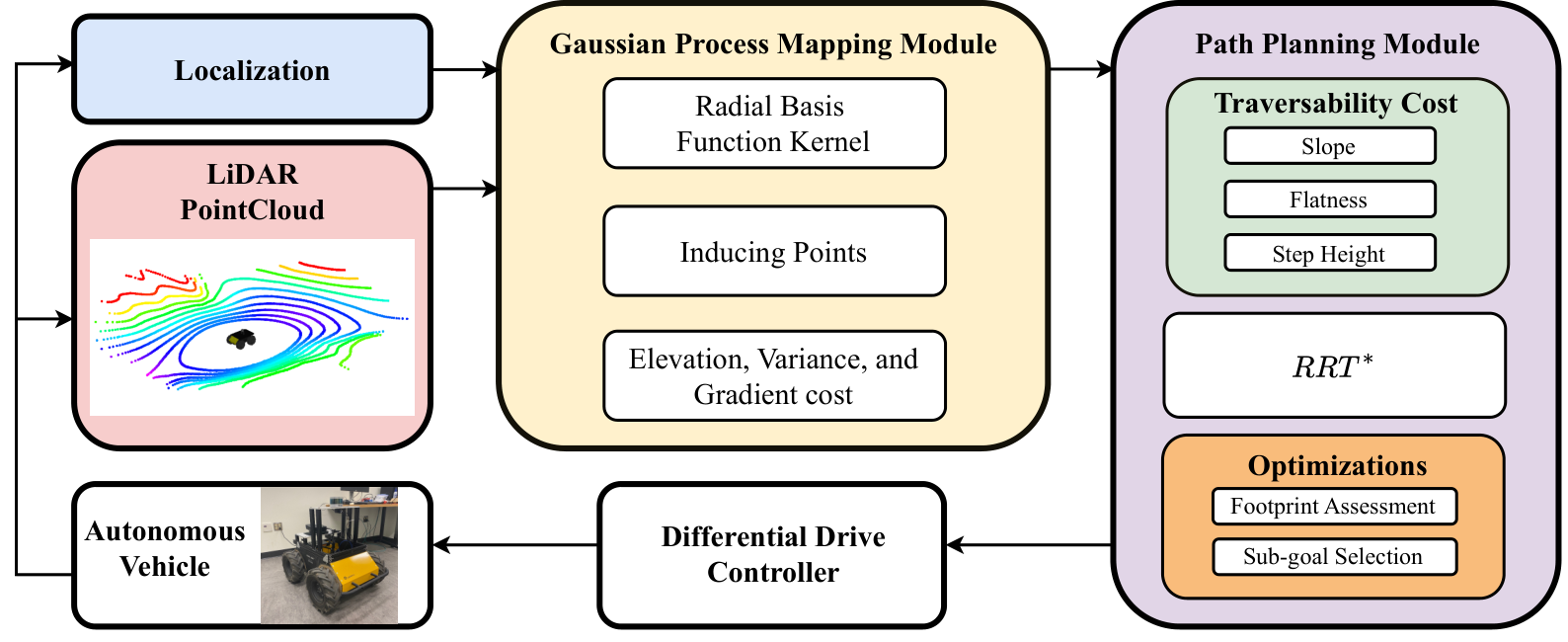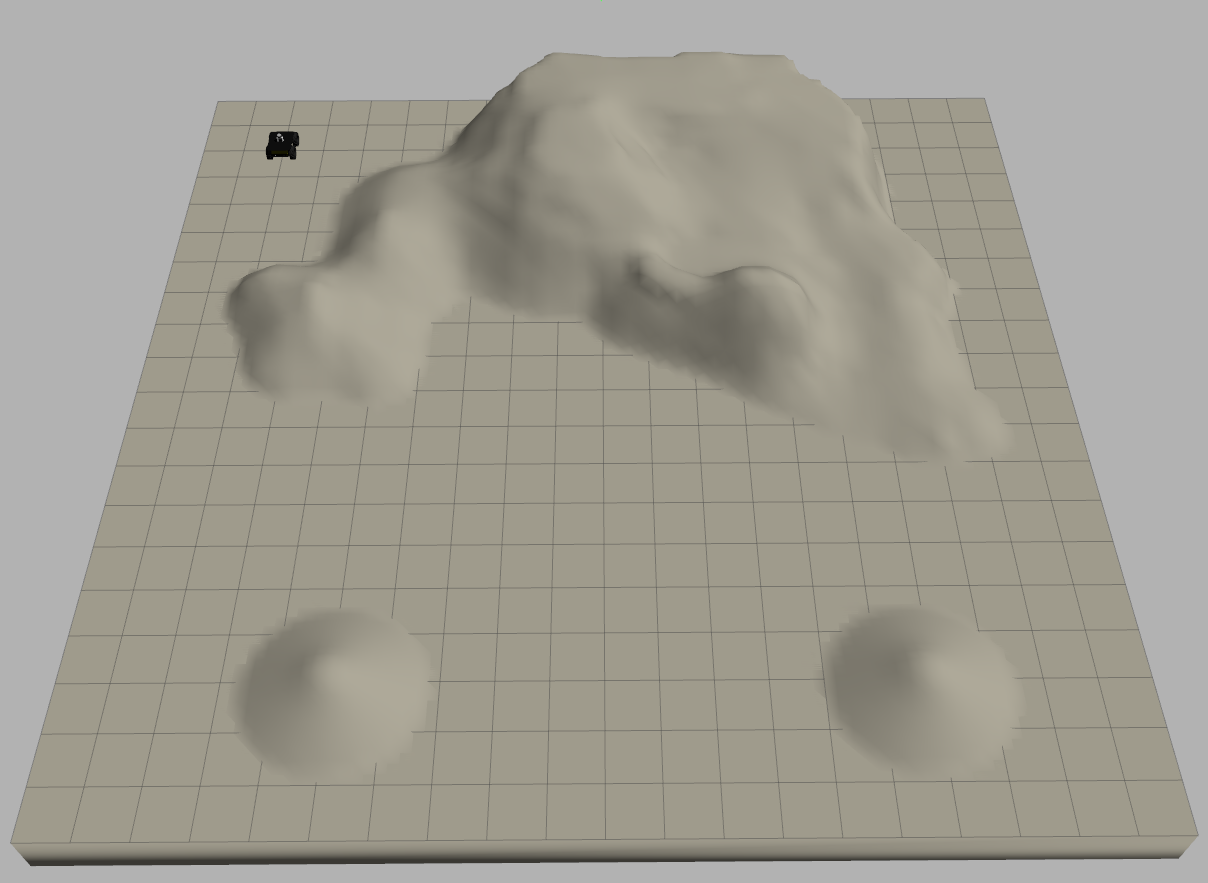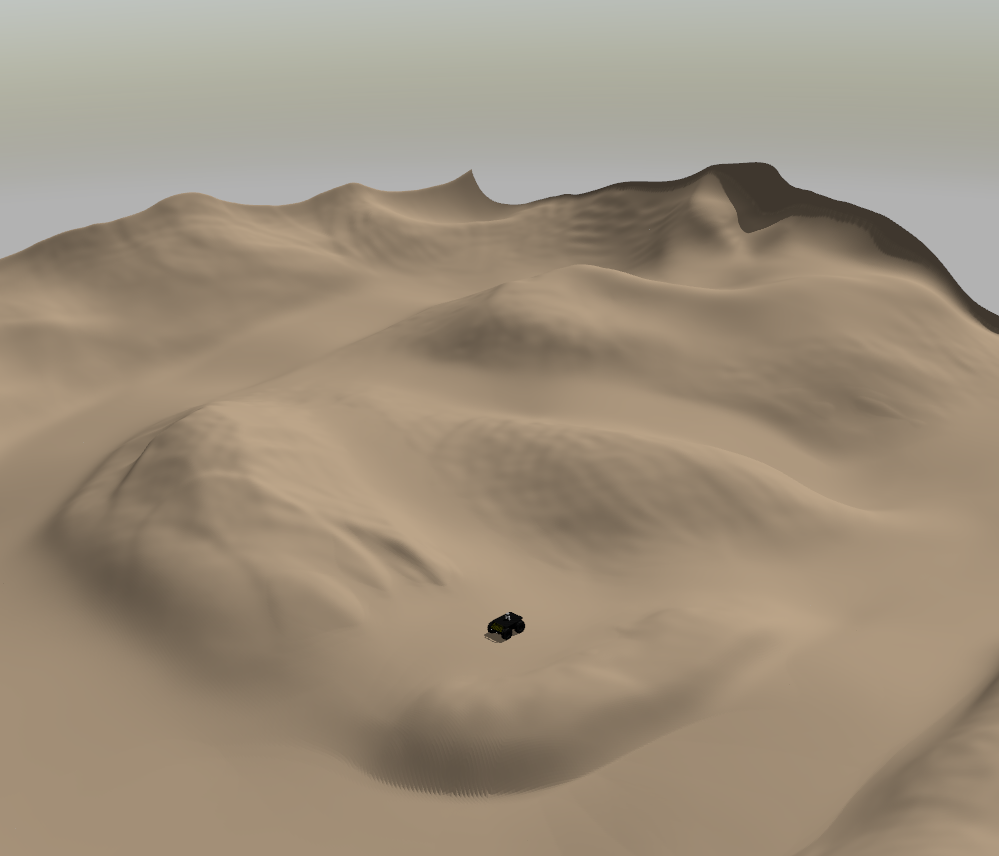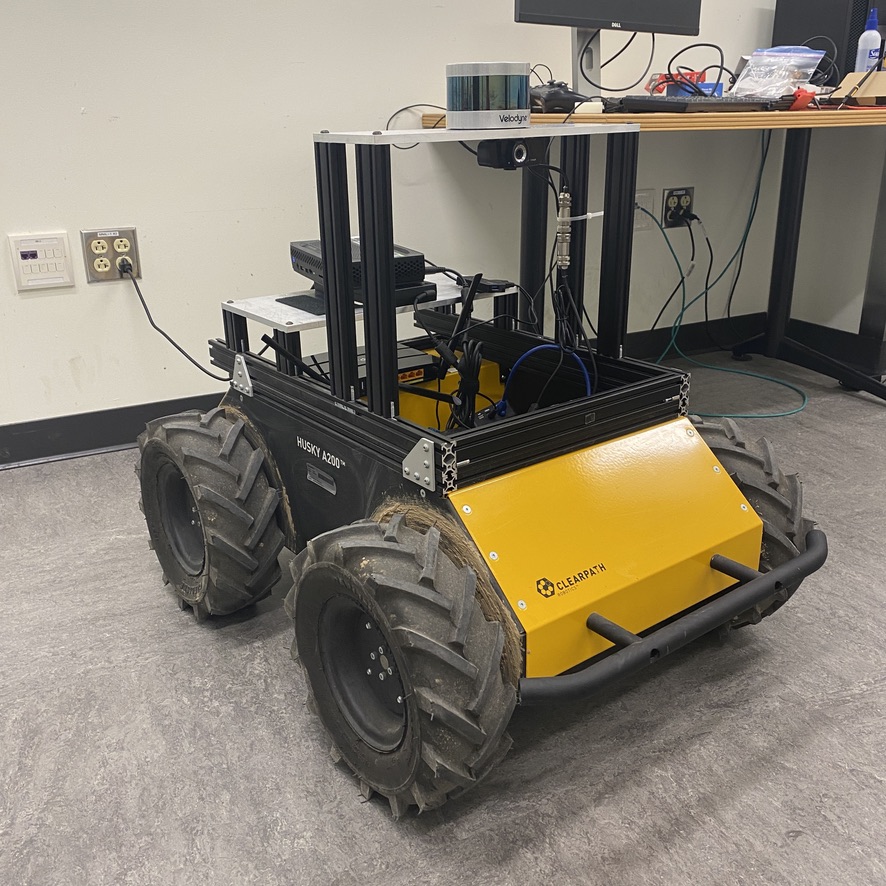- Related Paper: arXiv Preprint
- Video Demo: YouTube
This work has been accepted for publication at 2024 IEEE International Conference on Robotics and Automation. (ICRA 2024)
The code was tested on Ubuntu 20.04, using ROS Noetic, and Python 3.8.10.
- Clone GitHub Repositories:
cd ~/catkin_ws/src
git clone https://github.com/abeleinin/gp-navigation.git
git clone https://github.com/merose/diff_drive.git
Clone the current repository and merose/diff_drive, which provides a Python differential-drive controller API.
- Install Python and ROS dependencies:
cd gp-navigation
pip install -r requirements.txt
sudo apt install ros-noetic-tf2-sensor-msgs
-
Download the model files for simulation environments a and b from this OneDrive link into the
gp-navigationpackage directory. -
Build workspace:
cd ../..
catkin_make
source devel/setup.bash
We tested our code in 2 Gazebo environments shown above. Originally, environment A is Map 1 from the our baselines repo (PUTN). Environment B was chosen as a more challenging terrain with less flat areas.
The Clearpath Robotics Husky robot was used during testing. We also include launch files to run our method with the Jackal robot. The LiDAR sensor we use is the Velodyne VLP-16.
To use the ground truth localization for Husky in Gazebo, add the p3d_base_controller plugin in the Husky xacro file husky_description/urdf/husky.urdf.xacro
<plugin name="p3d_base_controller" filename="libgazebo_ros_p3d.so">
<alwaysOn>true</alwaysOn>
<updateRate>60.0</updateRate>
<bodyName>base_link</bodyName>
<topicName>ground_truth/state</topicName>
<gaussianNoise>0.01</gaussianNoise>
<frameName>world</frameName>
<xyzOffsets>0 0 0</xyzOffsets>
<rpyOffsets>0 0 0</rpyOffsets>
</plugin>
</gazebo>
- Note: you need to add the
p3d_base_controllerplugin intojackal.urdf.xacrofile if you are using Jackal instead of Husky.
We also tested our method with aloam localization to make a fair comparison with our baseline method (PUTN). Since, the repo was created prior to ROS Noetic's release, but we we're still able to make it work with the following dependency version. We found that ceres solve version 2.0.0 works and using the following installation guide.
Here is a demo of how you'd launch and run Task 3 from our paper:
- Spawn Husky into Environment B at the starting location:
roslaunch gp_navigation husky_gazebo.launch env:=env_b x:=-7 y:=-7 z:=-5.2
Use the env argument to chose the environment (default: env_a).
- Next, use the corresponding
gp_navigation_{robot}_{env}.launchfile to launch our method with the appropriate robot and environment configurations:
roslaunch gp_navigation gp_navigation_husky_env_b.launch
In RViz you can use the 2D Nav Goal tool to select a goal. To send more precise goals you can publish a Pose to the topic /plan_path_to_goal as shown below:
rostopic pub --once /plan_path_to_goal geometry_msgs/PoseStamped "header:
seq: 0
stamp:
secs: 0
nsecs: 0
frame_id: 'world'
pose:
position:
x: 10.0
y: 18.0
z: 0.0
orientation:
x: 0.0
y: 0.0
z: 0.0
w: 1.0"
All the parameters for our method is stored in the config/ directory. Click to expand for parameter descriptions:
GP Mapping Module Parameters
GP Mapping configs located in config/gp_module/.
| Name | Description | Default |
|---|---|---|
| length_in_x | map size in the x-axis | 10.0 |
| length_in_y | map size in the y-axis | 10.0 |
| resolution | Pixel density of maps grids | 0.2 |
| inducing_points | Subset of points to train GP model on | 500 |
Path Planning Module Parameters
Path Planning configs located in config/path_planning/.
| Name | Description | Default |
|---|---|---|
| step_len | Length of RRT* branching | 0.5 |
| iter_max | Maximum interations of RRT* | 1000 |
| radius | Circle about the robot, usually half the map size | 5.0 |
| trav_limit | Threshold for traversability safety | Determines how agressive to plan. |
| replan_dist | Distance to sub-goal before initiating replanning | Map size and compute dependent. |
| critical | Limitation on what the robot can safely traverse | Environment and robot dependent. |
| trav_weights | Weighting coefficients to determine their impact on traversability calculation | Environment and robot dependent. Weights should sum to 1. |
| sub_goal_weights | Weighting for sub-goal selection method | Environment and robot dependent. Weights should sum to 1. |
Our baseline comparison was PUTN: A Plane-fitting based Uneven Terrain Navigation Framework. The authors released their code here on GitHub: jianzhuozhuTHU/putn. We we're able to out perform their method in Task 2, which involved traversing the more challenging Environment B.
If you find this code or our work valuable, please cite:
@article{leininger2024,
title={Gaussian Process-based Traversability Analysis for Terrain Mapless Navigation},
author={Leininger, Abe and Ali, Mahmoud and Jardali, Hassan and Liu, Lantao},
journal={arXiv preprint arXiv:2403.19010},
year={2024}
}




